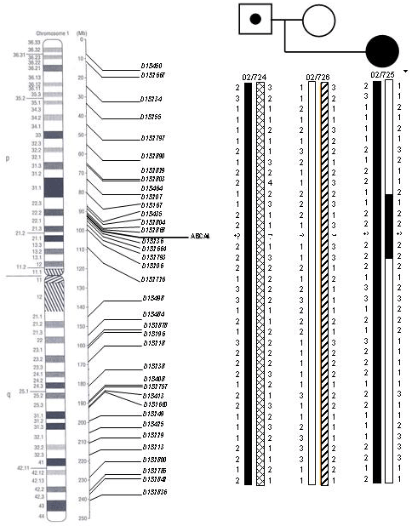![]() Figure 3 of
Riveiro-Alvarez, Mol Vis 2007;
13:96-101.
Figure 3 of
Riveiro-Alvarez, Mol Vis 2007;
13:96-101.
Figure 3. Pedigree showing the pattern of the 32 genetic markers used for chromosome 1 in the proband and in her parents
Patient's haplotype demonstrates that 5 markers for 1p, from D1S435 to D1S2664 (black bar), were homozygous and derived from one paternal chromosomal homolog. We concluded that paternal partial isodisomy was present, with breakpoints between 1p22.3 (D1S167-D1S435) and 1p22.1 (D1S2664-D1S2793). Markers D1S2793 and D1S206 could also be involved in the isodisomy, but were not informative (striped bar). Markers located on the short arm (excluding the isodisomic region), on the centromeric region, and on the distal region from the long arm (shown in brackets) clearly indicate normal maternal and paternal segregation. For the remaining markers along 1q, we could not distinguish between normal segregation or (partial) maternal heterodisomy. The location of the genetic markers, placed on the physical and cytogenetic maps of chromosome 1, was established according to the information contained in the NCBI database.
